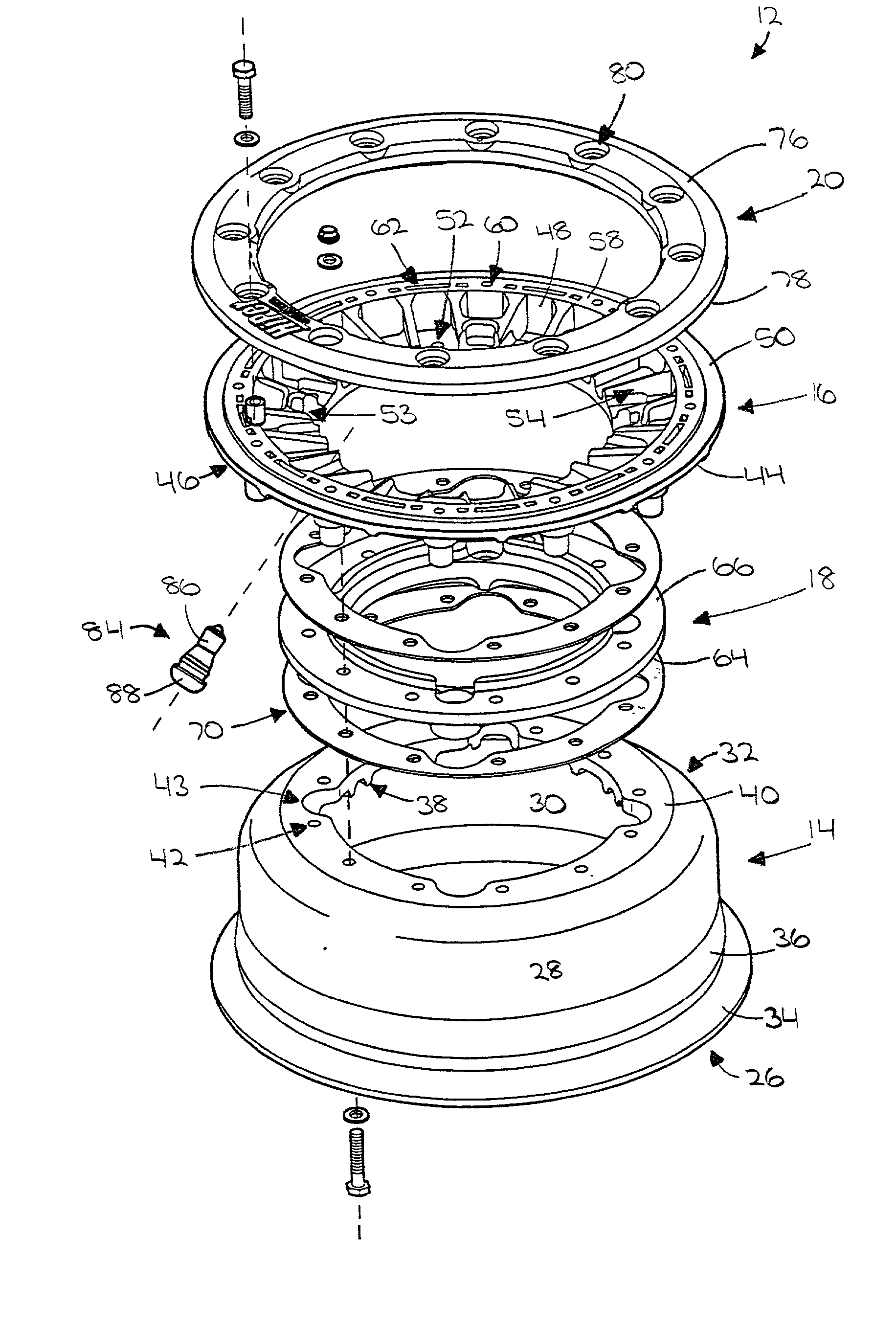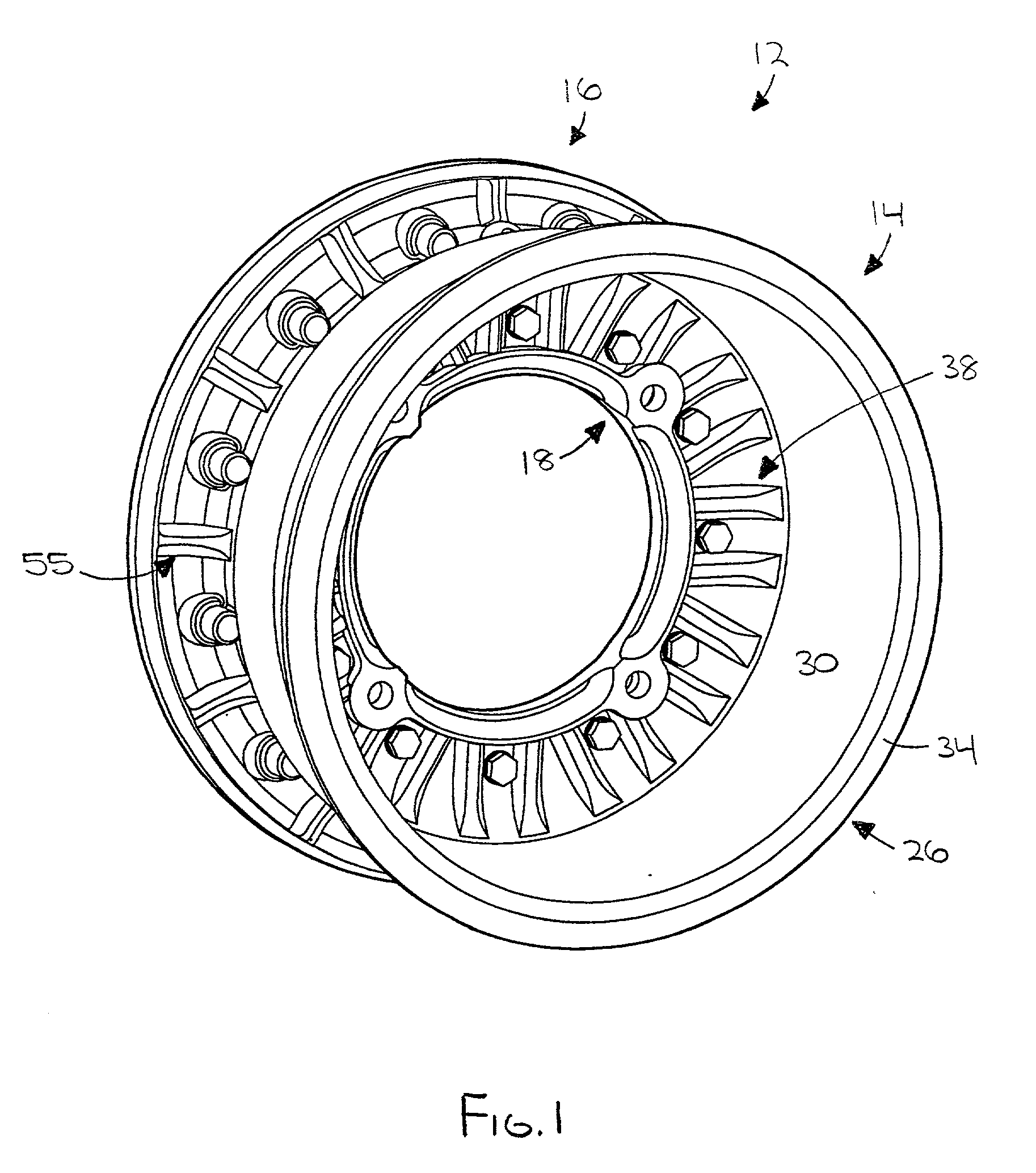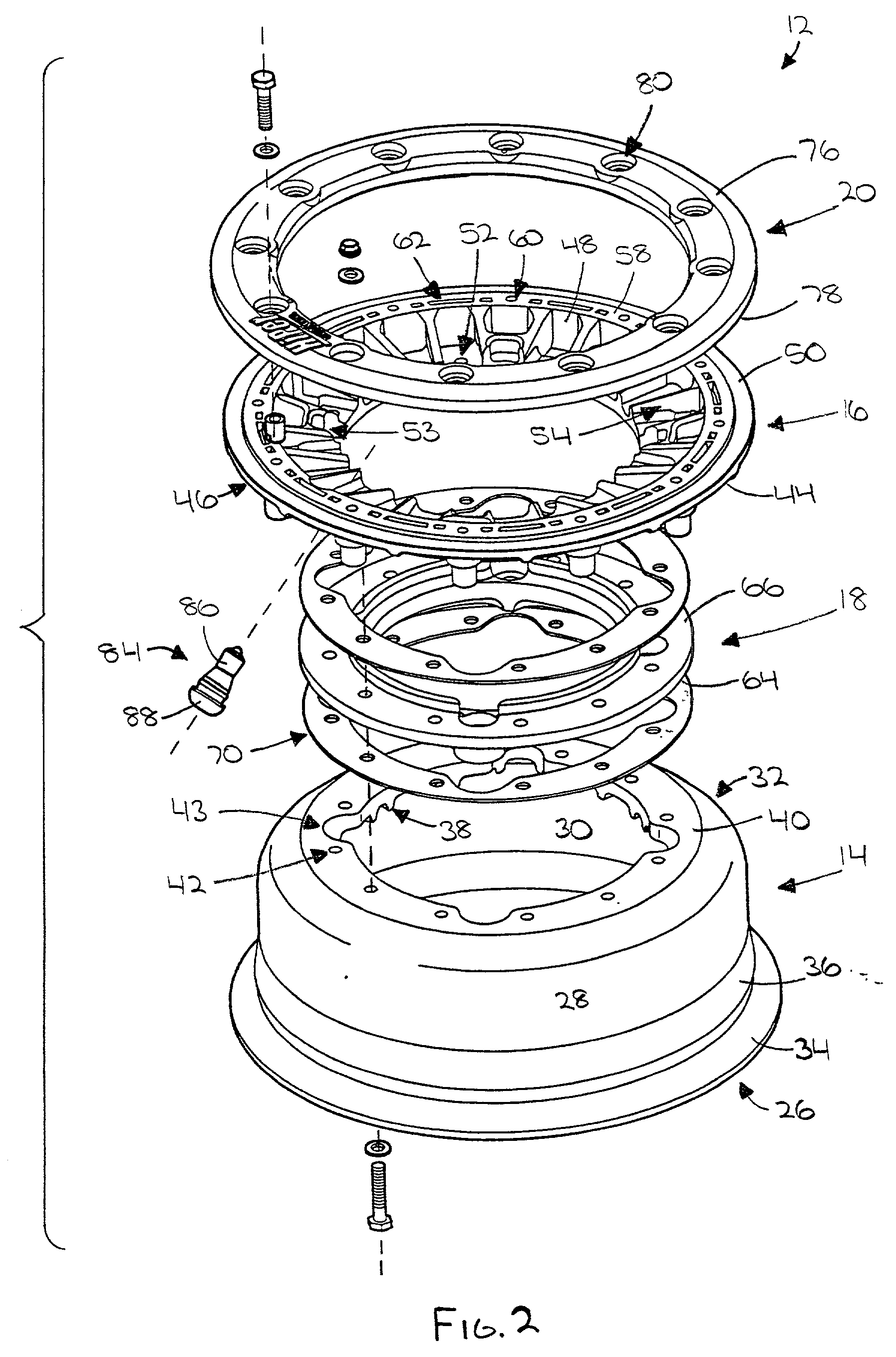Energy-absorbing flexible polymer vehicle wheel
a flexible, energy-absorbing technology, applied in the direction of vehicle components, non-metallic wheel bodies, rolling resistance optimization, etc., can solve the problems of metal wheels suffering from a number of disadvantages and limitations, general weight increase, lack of energy-absorbing flexibility
- Summary
- Abstract
- Description
- Claims
- Application Information
AI Technical Summary
Benefits of technology
Problems solved by technology
Method used
Image
Examples
Embodiment Construction
, below.
[0018] A preferred embodiment of the present invention is described in detail below with reference to the attached drawing figures, wherein:
[0019] FIG. 1 is an isometric view of a preferred first modular embodiment of the present invention;
[0020] FIG. 2 is an exploded isometric view of the embodiment shown in FIG. 1;
[0021] FIG. 3 is an exploded isometric view of a center section component of the embodiment shown in FIG. 1;
[0022] FIG. 4 is a fragmented sectional elevation view of a dynamic u-cup seal component of the present invention;
[0023] FIG. 5 is an exploded fragmented perspective view of an outboard wheel half component and a bead ring component of the embodiment shown in FIG. 1;
[0024] FIG. 6 is a plan view of the embodiment shown in FIG. 1;
[0025] FIG. 7 is a sectional elevation view of the embodiment shown in FIG. 1 taken along line 1-1 of FIG. 6;
[0026] FIG. 8 is an exploded isometric view of a mud plug component and the bead ring component of the embodiment shown in F...
PUM
 Login to View More
Login to View More Abstract
Description
Claims
Application Information
 Login to View More
Login to View More - R&D
- Intellectual Property
- Life Sciences
- Materials
- Tech Scout
- Unparalleled Data Quality
- Higher Quality Content
- 60% Fewer Hallucinations
Browse by: Latest US Patents, China's latest patents, Technical Efficacy Thesaurus, Application Domain, Technology Topic, Popular Technical Reports.
© 2025 PatSnap. All rights reserved.Legal|Privacy policy|Modern Slavery Act Transparency Statement|Sitemap|About US| Contact US: help@patsnap.com



